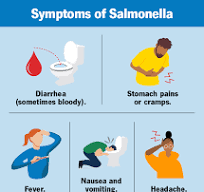
Aug . 18, 2024 03:47 Back to list
Understanding Mycoplasma Felis Infection in Cats and Its Implications for Feline Health
Understanding Mycoplasma Felis in Cats
Mycoplasma felis is a species of bacteria that can have significant implications for feline health. While often overlooked, this microorganism can lead to a variety of conditions in cats, making it essential for pet owners and veterinarians to be aware of its existence and impact.
What is Mycoplasma Felis?
Mycoplasma felis is part of a larger group of bacteria known as mycoplasmas, which are unique due to their lack of a rigid cell wall. This characteristic allows them to adopt various shapes and contributes to their ability to evade the immune system. Mycoplasma species are typically found in the respiratory, urogenital, and mucosal surfaces of many animals, including cats. The organism primarily resides in the respiratory tract and can cause respiratory infections, particularly in young or immunocompromised cats.
Transmission and Risk Factors
Mycoplasma felis can be transmitted through direct contact with an infected cat or through environmental exposure. Cats living in crowded or unsanitary conditions are particularly susceptible, as stress and poor hygiene can compromise their immune systems. Feline shelters, rescues, and multi-cat households often encounter higher rates of Mycoplasma infections because of the close quarters shared by the animals.
Symptoms of Infection
Infected cats may show a range of symptoms, which can vary in severity. Common signs associated with Mycoplasma felis infections include
- Respiratory Distress Cats may experience coughing, sneezing, nasal discharge, or difficulty breathing. - Conjunctivitis Eye infections may occur, leading to redness, swelling, and discharge. - Fever In some cases, affected cats may develop a fever as their body responds to the infection. - Reduced Appetite Sick cats may show a decline in appetite due to discomfort.
mycoplasma felis in cats factory

Given that these symptoms can mimic other respiratory diseases, definitive diagnosis often requires veterinary intervention.
Diagnosis and Treatment
Diagnosis of Mycoplasma felis infections typically involves diagnostic tests, such as PCR (polymerase chain reaction) assays, which can identify the presence of the bacteria in respiratory secretions or other tissues. A veterinarian may also conduct a thorough clinical examination and review the cat's health history to rule out other potential causes of the symptoms.
Treatment usually focuses on addressing the underlying bacterial infection. Antibiotics that target mycoplasmas are often prescribed, and supportive care may be necessary to help the cat recover fully. It is crucial for pet owners to adhere to their veterinarian's recommendations regarding treatment and follow-up care to ensure the best outcome for their feline companions.
Prevention
Preventing Mycoplasma felis infections involves maintaining a clean and stress-free environment for cats. Regular veterinary check-ups, vaccination, and prompt treatment of any respiratory symptoms can help reduce the risk of infection. In multi-cat households or shelters, quarantine measures may be effective in controlling outbreaks and protecting vulnerable cats.
Conclusion
Mycoplasma felis is a significant yet often underappreciated health concern for cats. By understanding its effects, symptoms, and treatment options, pet owners can take proactive steps to safeguard their feline companions' health. Regular veterinary care, coupled with preventive measures, plays a vital role in minimizing the risks associated with this bacterium, ensuring that our cats live happy, healthy lives.
-
Acute Salpingitis and Oophoritis AI Factory
NewsJul.31,2025
-
Premium China Bacillus Subtilis Supplier & Factory Solutions
NewsJul.30,2025
-
Premium Avermectin Supplier in China | Custom Solutions Available
NewsJul.29,2025
-
China Bacillus Subtilis Supplier - Custom Factory Solutions
NewsJul.29,2025
-
China Salivation: Leading Custom Salivation Supplier & Factory Solutions
NewsJul.29,2025
-
Leading Lincomycin Hydrochloride Manufacturer & Supplier with High Purity
NewsJul.29,2025




